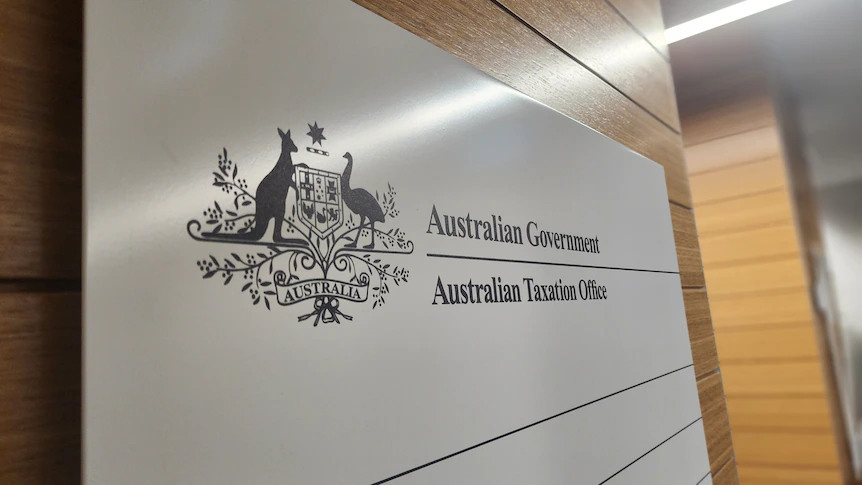By Gareth Hutchens
Copyright abc

The proportion of large companies in Australia that paid no tax in the most recent income year has declined from 36 per cent to 28 per cent over the past 11 years.
The Australian Taxation Office (ATO) said the drop was largely a reflection of better business conditions, but its tax compliance work had also contributed.
The ATO’s 11th annual corporate tax transparency report (CTT), which covers large corporate entities with a total income equal to $100 million or more, was released on Thursday.
It showed 4,110 corporate entities lodged tax returns for the 2023–24 income year, and 1,136 paid no tax (28 per cent).
The report attributed no tax being paid to various reasons, including companies making an accounting loss, or claiming tax offsets that reduced their tax bill to zero, or utilising tax losses from previous years.
“For the first time since CTT reporting began, the amount of entities paying no tax has dropped below 30 per cent,” ATO assistant commissioner Michelle Sams said.
“This is the lowest proportion of nil tax entities in 11 years of CTT reporting and in part reflects the continued efforts of the Tax Avoidance Taskforce in holding large corporates to account.
“Australia has some of the highest levels of tax compliance of large business in the world, with 94.1 per cent of tax paid voluntarily, and 96.3 per cent after ATO’s compliance actions.”
ATO waiting to see impact of Trump’s scuttling of OECD reform
The ATO’s latest corporate tax transparency report (CTT) was the first to be published since US President Donald Trump undid more than a decade of progress towards multinationals paying their fair share of tax by striking a deal to exempt America from a worldwide corporate tax floor.
In 2021, about 140 countries, including Australia, signed up to the Organisation for Economic Cooperation and Development (OECD) “Global Minimum Tax” deal, a plan that had been years in the making.
Those countries had, in principle, agreed to a set of rules for a 15 per cent global minimum tax.
It was aimed at helping countries like Australia collect more tax from digital tech giants like Google, Apple, Microsoft, Facebook, Amazon and others by applying that minimum tax rate.
It meant Australia would have been able to apply a top-up tax if a US firm paid less than a 15 per cent tax rate in Australia.
The implementation of the law in Australia was expected to increase receipts by $370 million and increase payments by $111 million over the five years from 2022-23.
But ATO assistant commissioner Michelle Sams said the impact of that move by President Trump would take time to show up in the data.
“We aren’t expecting [to see that] until 2026,” she told the ABC.
She said in the meantime, the ATO will keep focusing on companies shifting profits to low tax jurisdictions via techniques like transfer pricing and the migration of intellectual property.
Reasons for tax losses
The ATO said there were many reasons why a corporate entity may not pay tax in an income year.
It said that when an entity has tax deductions that exceed its income, it can incur a tax loss and pay no tax for the year.
It said companies with losses in one year can carry the losses forward and deduct them from their profits in future years.
Companies may also be able to use features in Australia’s tax system, such as tax offsets, to reduce the amount of tax they pay, sometimes to zero.
It said eligibility criteria for each offset can be different and are used to stimulate investment in areas given special concessions in the tax law (such as the research and development tax incentive).
The ATO report showed that all industry segments reported a decrease in the number of entities paying no tax in the 2023-24 income year.
However, the “Mining, Energy and Water” segment had a higher proportion of entities that paid zero tax compared to other segments, due to factors such as volatile commodity prices and extended lead times before projects become revenue-generating.
PRRT revenue declines by 20pc
The ATO’s report showed there was an increase in the number of corporate entities paying the Petroleum Resource Rent Tax (PRRT) in 2023-24, with the commencement of the PRRT deductions cap.
The deductions cap limits the amount of deductible expenditure available to offset assessable receipts in a year of tax for a liquefied natural gas (LNG) project.
There were 16 entities paying PRRT, up by five, with a total PRRT payable of $1.48 billion.
But the overall amount of tax revenue collected by the PRRT still declined in 2023-24, despite the increase in the number of PRRT payers.
PRRT payable decreased 20.6 per cent from $1.86 billion last year to $1.48 billion this year.
The ATO said the profitability of PRRT-liable companies declined in 2023-24 due to a range of factors, including lower oil prices, decreasing production in longstanding projects, and increased costs.
The ATO said the annual PRRT collections were highly correlated to the price of oil.
“The oil price is sensitive to developments in the global energy market,” the report said.
“For example, the 2021–22 result is primarily attributed to energy prices reacting to market volatility created by the Russian invasion of Ukraine.”
Tax payable concentrated among small number of large firms
The ATO report showed corporate tax payable was also highly concentrated in a small number of large entities.
It said total income for the 4,110 entities in the 2023-24 report was $3.3 trillion, taxable income was $365.5 billion, and tax payable was $95.7 billion.
But entities with income of more than $5 billion, which represented just 2.3 per cent of the corporate entities in the report, accounted for 59.3 per cent of tax payable ($56.8 billion).
Entities with income of less than $250 million – which represented the largest portion (54.4 per cent) of the entities in the report — accounted for only 7.2 per cent of the tax payable ($6.9 billion).



